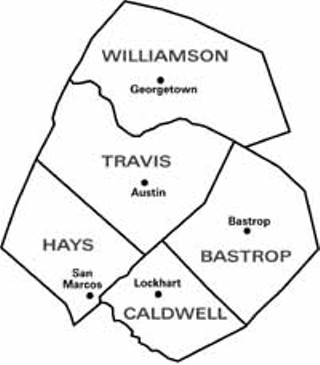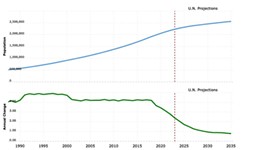It's a Vision Thing
What's up with regional planning?
By Mike Clark-Madison, Fri., Oct. 26, 2001

Since the mid-Seventies, the city of Austin has been too fractured by growth-related warfare to adopt a comprehensive city plan. Metro Austin's official transportation plan, produced by the Capital Area Metropolitan Planning Organization, only covers Travis, Northern Hays, and Southern Williamson Counties. Yet the official Austin metro area covers all of those three counties plus Bastrop and Caldwell, incorporating points as distant as Florence, Granger, Elgin, Smithville, Luling, Wimberley, Spicewood, Lago Vista, and Liberty Hill. Where's the plan for the real "region"?
The nascent Central Texas Regional Vision Project (RVP) aims to bring the clearly interdependent metro area into the modern age. According to John Fregonese and Peter Calthorpe, the marquee-name consultants who would lead the effort, the project is "a process driven by a group of community leaders working toward a regional framework that addresses growth pressures in the region." After undertaking a year's worth of community meetings and media outreach, "We, the people" and our representatives would develop several alternative scenarios for how Central Texas should grow -- and then pick one. The vision could then guide the policies of the dozens of cities, counties, and other jurisdictions in the five-county area. For example, before Travis County floats bonds for roads built straight over the aquifer, it could consult the RVP -- whatever it ends up looking like -- and find out that Central Texans really don't want to pave over the aquifer. How sensible -- and how long in coming.
"Over the last 10 years, 350,000 people moved into the metro area," notes Austin City Council Member Will Wynn, the city's main advocate for the project, "and we did a poor job, at best, of planning for them. And it set the stage for skirmishes that will only proliferate" between local jurisdictions. Such fights do little good for us citizens -- since, after all, most of us live and work in at least one city and at least one county in the RVP area. The controversy over this year's Travis County bond package, which would be mostly funded by Austin voters but mostly runs counter to the city's growth management policies, is an obvious case.
Fregonese was the longtime planner at Portland's Metro -- the nation's only elected regional government -- and is a visiting lecturer in the Community and Regional Planning Program at the UT School of Architecture. Calthorpe is the Bay Area urban planner and architect whose projects include Austin's long-awaited Triangle Square mixed-use development between Guadalupe and Lamar, north of 45th Street. The duo previously scored success with Envision Utah, the Salt Lake City equivalent of the Central Texas RVP (and if you think our region is blighted by intramural infighting and rock-ribbed conservative resistance to growth management, you should check out Salt Lake City). It was, in fact, property-rights Republicans such as Utah Gov. Mike Leavitt who, appalled by the 1,200 fast-food restaurants that sprouted along the edges of the Salt Lake Valley in just five years, took ownership of Envision Utah and cleaned up their own sprawl-promoting act.
Here in Texas, planners have to quash not only rivalries between Austin and everyone else, and GOP objections to even whispered restrictions of property rights, but also local government's general powerlessness to conduct serious land use regulation. A regional vision for growth management would have to be adopted by consensus, because there's no way for it to be imposed. So it's at least encouraging that the Greater Austin Chamber of Commerce, the Lower Colorado River Authority, CAMPO, the city of Austin, and the Austin Neighborhoods Council -- which respectively cover the ideological spectrum, from most pro-growth to most anti-growth -- are among those working on the RVP.
"As budgets tighten dramatically, the silver lining [of a recession] may be that we can catch our breath, slow down, and get some regional planning done," Wynn said. "Any policymaker needs to realize that all our resources -- natural, financial, human -- are limited now, and self-preservation tells us not to get our brains beat in with a cross-jurisdictional firefight. It's disingenuous to assume 'the other side' doesn't give a care about what your vision may include and that you have to fight rather than cooperate."
Unfortunately, most Central Texans have shown they don't care about their own vision enough to visit the ballot box. Since the natural core constituency for the RVP is in Austin, other "regional" players may care even less. (As of yet, nobody in Bastrop or Caldwell Counties has joined the Central Texas RVP steering committee, although the LCRA service area does include both.) "Everybody believes the time is now for regional planning, but they fear Austin will have too much control," said Jim Walker, who is working with the RVP both as president of the Austin Neighborhoods Council and as director of the Central Texas Regional Indicators Project. He hopes to involve stakeholders from the far corners of the region. "It's important who is in the decision-making role, whose funds are at work. It's easy to devise conspiracies about what interests need what outcomes from regional planning, and everyone has an agenda. That's fine. Let's just get all the agendas out on the table."
Meanwhile, Wynn has asked CAMPO to fund $400,000 of the estimated $1.5 million project from its state-allocated discretionary funds, a request that the CAMPO board will consider in November. (Other potential funding sources include LCRA, the Chamber, and old reliable Capital Metro.) CAMPO Executive Director Mike Aulick said the project is "a great thing," especially since it offers a chance to build awareness of and buy-in for CAMPO's own transportation process, which right now is the only regional planning we have. Both the next CAMPO plan update and the Regional Vision Project are aiming for a 2003 completion date.
Got something to say on the subject? Send a letter to the editor.








